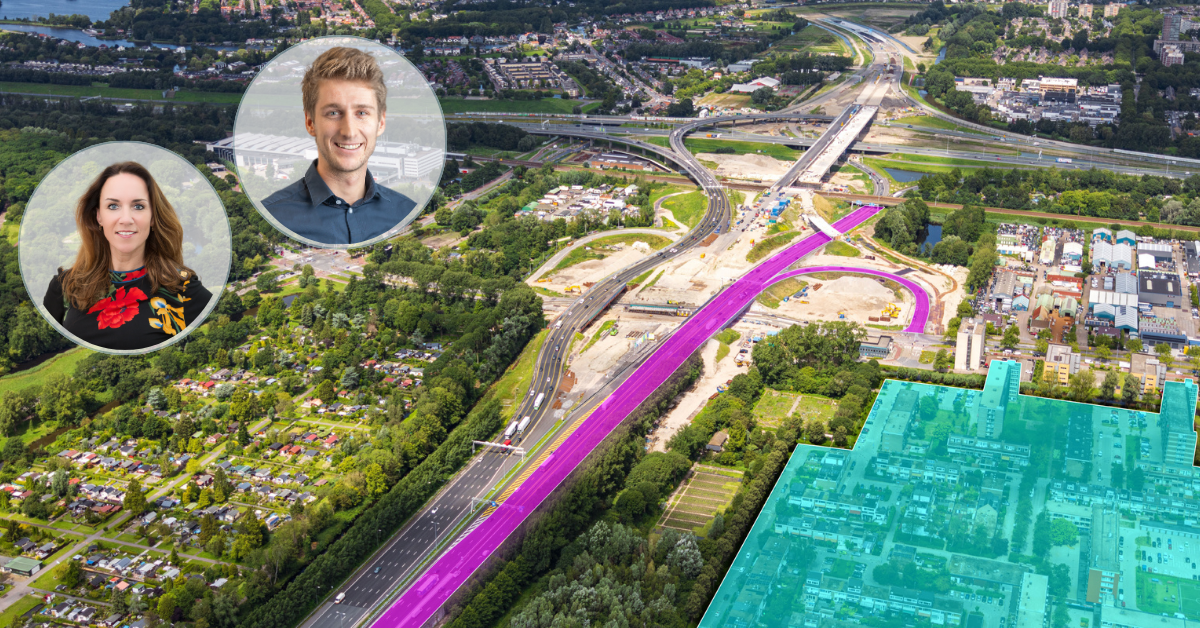Insights from Brazil and the future of Traffic Management - Bob McQueen explores how technology-driven enforcement is transforming road safety and urban mobility.
Road traffic fatalities claim over 1.3 million lives globally each year, with speeding identified as one of the leading contributing factors. As urbanization accelerates and vehicle populations surge, traditional manual enforcement methods are increasingly overwhelmed, struggling to maintain adequate coverage and consistency across expanding road networks.
Automated enforcement systems represent a paradigm shift in traffic management — offering scalable, precise, and continuous monitoring capabilities that operate 24/7 without fatigue or bias. These systems combine advanced camera technology, artificial intelligence, and data analytics to detect violations instantly and create comprehensive records of traffic patterns.
Automated Enforcement: What is it?
Advanced cameras paired with radar systems automatically detect speeding violations and red-light running in real time, capturing precise evidence without human intervention. Citations are automatically generated and mailed directly to registered vehicle owners, creating a streamlined process that supplements traditional traffic enforcement methods. Decades of research demonstrate that automated systems effectively reduce dangerous driving behaviors, creating measurable improvements in road safety and driver compliance.
Decades of research demonstrate that automated systems reduce dangerous driving behaviors and measurably improve safety and compliance.
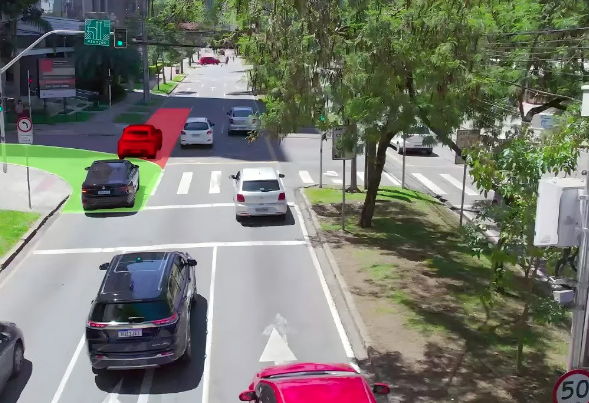
Typical MOBILIS roadside unit combining camera, radar and secure communications for 24/7 enforcement. (Credit: Mobilis)
The benefits: saving lives and costs
Automated traffic enforcement represents a transformative approach to road safety, leveraging technology to reduce dangerous driving behaviors while optimizing resources. Camera-based systems are creating safer streets, saving lives, and delivering measurable economic benefits to communities on an international scale. Through independent research studies, traffic technology specialists Mobilis discovered that each of their roadside units deployed in Brazil saves 34 accidents and three lives every year. Just imagine what wider deployment worldwide could do.
Automated systems operate continuously without breaks, fatigue, or human limitations, ensuring consistent enforcement at all hours. By handling routine violations, cameras allow police officers to redirect their focus toward violent crime, community policing, and other critical public safety priorities. Automated enforcement applies identical standards to every violation, eliminating potential bias and ensuring fair treatment regardless of driver identity or demographics.
Camera-based systems are creating safer streets, saving lives, and delivering economic benefits at scale.
Brazil’s automated enforcement landscape: scale and scope
Brazil has emerged as a leader in automated traffic enforcement across Latin America, with 18,284 speed cameras positioned throughout 1,855 municipalities of all sizes. Cities including São Paulo, Rio de Janeiro, Belo Horizonte, Curitiba, Recife and Brasília have invested heavily in comprehensive surveillance networks that blanket critical roadways, intersections and enforcement zones.
These sophisticated systems capture a wealth of granular vehicle data at every detection point:
- High-resolution license plate images for positive identification
- Precise speed measurements using radar or laser technology
- Vehicle classification (motorcycle, car, truck, bus)
- Date and timestamp with millisecond accuracy
- GPS coordinates and directional information
This robust hardware foundation enables continuous, uninterrupted enforcement operations and reliable data transmission to centralized traffic management systems — critical for maintaining public safety around the clock in challenging environmental conditions.
Brazil leads Latin America in deployment, with 18,284 speed cameras across 1,855 municipalities.
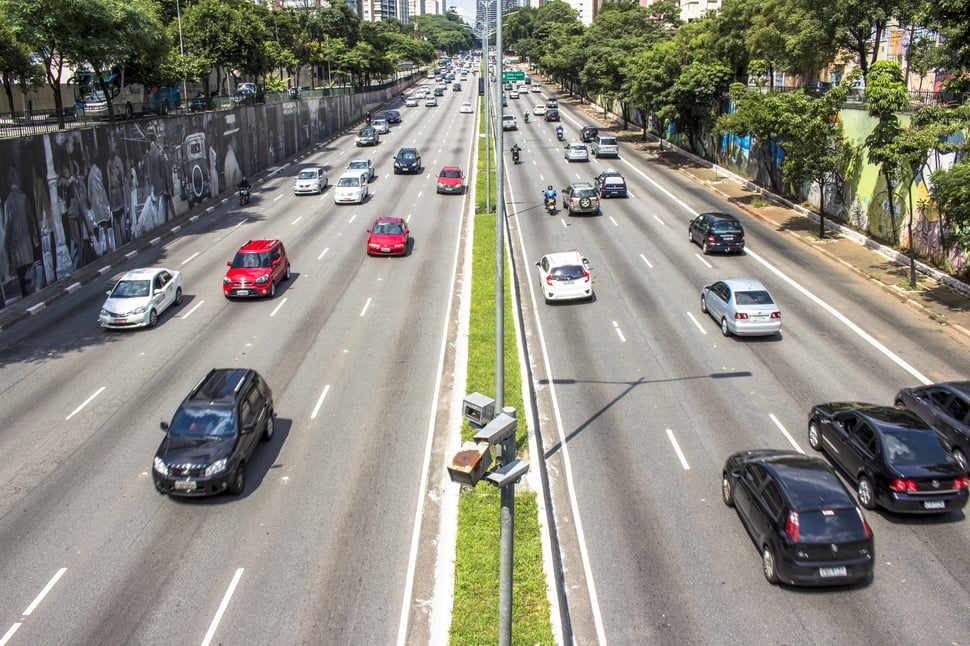
Median-mounted speed cameras in São Paulo deliver consistent, unbiased enforcement across multilane corridors. (Credit: Alf Ribeiro / Dreamstime)
Measurable safety improvements
Automated enforcement deployment across Brazilian cities has produced demonstrable reductions in dangerous driving behaviors. Red-light violations have decreased significantly at monitored intersections, while speeding incidents show marked declines on camera-equipped roadways. Over the First Decade of Action for Road Safety — a United Nations initiative — Brazil reduced road fatalities by 30%, with automated enforcement playing an important role.
Real-time monitoring enables early warning systems that alert traffic managers to developing hazards, contributing to lower accident rates and enhanced pedestrian safety at crosswalks and school zones.
Data as a catalyst: beyond enforcement to intelligent traffic management
The true transformative potential of automated enforcement systems extends far beyond issuing citations. Every camera activation generates valuable data streams that, when aggregated and analyzed, provide unprecedented insights into urban traffic dynamics.
Data collection
Vehicle counts, speeds, classifications, violation types and precise temporal patterns are captured continuously.
Real-time analysis
Intelligent dashboards process incoming data streams to display current traffic status for city planners and security agencies.
The power of enforcement data lies in its reuse — every detection becomes a data point for smarter operations.
Electronic geo-fence
Automated license plate readers, integrated into enforcement systems, generate rich datasets with vehicle identification, position and time. Police can identify stolen vehicles and track routes linked to firearms and drug smuggling.
Strategic planning
Historical analytics identify congestion patterns and harsh-braking hotspots, enabling infrastructure improvements and signal optimization. Brazilian technology companies such as Mobilis have pioneered intelligent dashboard systems that transform raw enforcement data into actionable intelligence. These platforms provide traffic managers, police departments, and municipal security agencies with comprehensive real-time visibility across entire metropolitan areas — informed by the world’s largest documented automated enforcement market.
Congestion management
Analytics reveal bottlenecks and peak periods, enabling adaptive signal timing that reduces average commute times.
Emergency response
Live traffic data helps emergency services identify optimal routing during incidents, potentially saving critical minutes.
Urban planning
Long-term traffic pattern analysis informs infrastructure investment decisions and new development impact assessments.
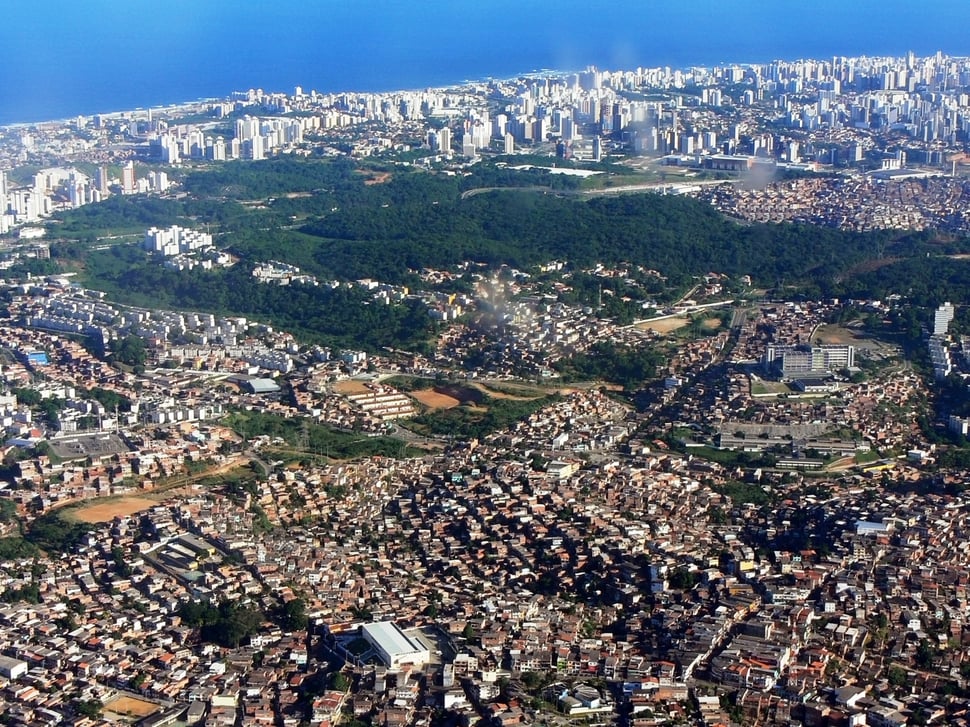
Nationwide deployments span cities of all sizes — from coastal Recife to São Paulo — feeding national datasets. (Credit: Juliana Galluccio / Dreamstime)
Challenges and lessons learned from Brazil’s experience
Legal and regulatory hurdles
Automated enforcement laws emerged nationwide in the late 1990s, enabling traffic enforcement throughout Brazil. State vehicle-owner database exchange began in the 2000s, allowing enforcement to be valid between multiple states, and was consolidated in 2016 with the National Violation Database integrating fines across all 26 states and the Federal District. Contracts based on revenue sharing of fines were challenged by public opinion; while not banned, the Court of Auditors does not recommend them. Today, no revenue-sharing contracts are active in Brazil.
Brazil built a national legal and data backbone — culminating in a unified violations database — to scale enforcement fairly.
Technical resilience requirements
Maintaining hardware in harsh tropical climates proved challenging. Early deployments saw higher-than-expected failure rates due to heat, humidity and inadequate surge protection. Solutions included ruggedized industrial-grade equipment and comprehensive preventive maintenance programs.
Public acceptance and trust
Initial skepticism — concerns about “revenue traps” and surveillance — required proactive communication. Transparency campaigns explaining purposes, publishing statistics and demonstrating safety improvements gradually built confidence and compliance.
Multi-agency integration complexity
Coordinating municipal traffic departments, state police, judiciary systems and technology contractors demanded robust governance. Clear data-sharing protocols, standardized interfaces and dedicated integration teams proved essential for operational success.
Clear data-sharing protocols, standardized interfaces and dedicated integration teams are non-negotiable for success.
The future: next-generation traffic management powered by enforcement data
Brazil’s current infrastructure represents just the beginning. Emerging technologies and innovative applications promise to transform enforcement data from a primarily reactive tool into the foundation for proactive, intelligent urban mobility systems.
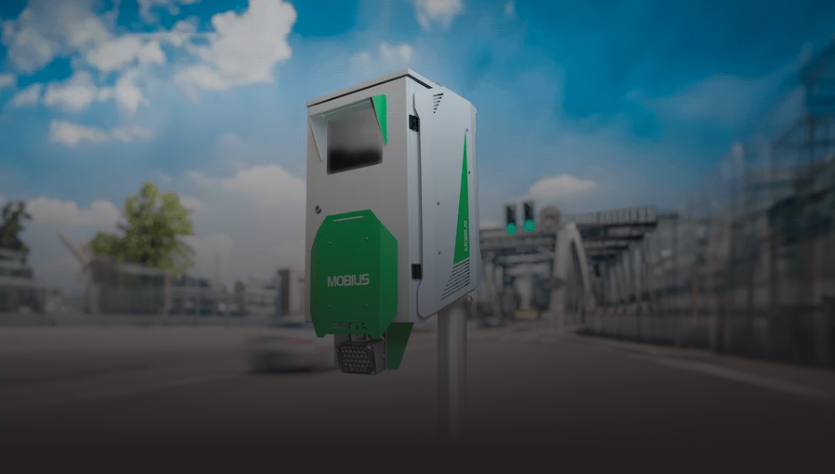
Modern platforms evolve from enforcement tools to citywide mobility sensors powering intelligence. (Credit: Mobilis)
Automated enforcement as a cornerstone of safer, smarter cities
Brazil’s extensive experience shows that technology-driven traffic management significantly enhances road safety and urban efficiency. Reductions in crashes and fatalities, improved traffic flow and enhanced emergency response demonstrate the immediate value of these investments. Crucially, camera networks generate comprehensive real-time datasets that help cities evolve from reactive enforcement to proactive, intelligent traffic management ecosystems.
Critical success factors
- Continued investment in ruggedized, high-performance technology infrastructure
- Clear legal frameworks balancing enforcement with privacy rights
- Clear and standardized signs informing the presence of automated enforcement
- Sustained public engagement to build understanding and trust
- Strategic integration of enforcement data with broader smart-city initiatives
As urbanization accelerates worldwide and vehicle populations expand, the combination of automated enforcement and advanced analytics will become indispensable for sustainable mobility and safer roads. The question is no longer whether to deploy these technologies, but how quickly cities can implement them effectively — learning from pioneers like Brazil.
